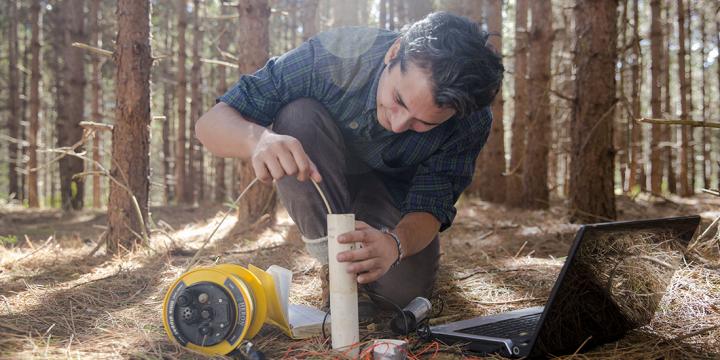Project Number:
WR17R002
Funding Year:
2018
Contract Period:
7/1/2017 - 6/30/2019
Funding Source:
UWS
Investigator(s):
Abstract:
Research questions, hypotheses, and objectives
In this research, we explored:
Question 1) Where and how much do trees in temperate forests use GW? We hypothesize that where available, trees use GW as an additional water supply for transpiration. We expect a gradient of GW use along a depth to GW gradient, where GW use is the highest and most frequent in areas where the watertable is close to the surface to no GW use where the watertable is deep below the root zone.
Question 2) To what extent and under what conditions does shallow GW influence tree growth in the context of changing GW levels due to climate variability and/or pumping? We hypothesize that temperate forests with sandy soils, such as in central WI and the northern highlands of WI, do not retain sufficient moisture to meet transpiration demand during times of drought and as a result temperate forests use shallow GW when accessible as an adaptation to buffer adverse growth impacts leading to relatively higher growth than trees in areas of deeper GW. We further hypothesize that the amount of GW use, and therefore influence of GW on tree growth, declines as the water table declines due to drought conditions and/or pumping. We expect strong relationships between the variability in tree growth and shallow GW levels such that GW depth histories may be reconstructed from tree growth time series.
The overall objective of this research is to detect, quantify, and evaluate the extent to which trees use, and have historically used, GW in two sandy areas of WI. Using field observations in forests within the WI Central Sands and the Northern Highlands regions, the objectives of this project are to (1) identify when and where in these landscapes trees currently use GW; (2) quantify current GW use of trees across a range of GW depth; (3) evaluate the role of GW on forest productivity during drought and non-drought conditions; (4) reconstruct historic changes in GW levels from tree growth time series to identify changes in water levels due to pumping and/or climate-induced variability.
Project Reports:
No Reports

